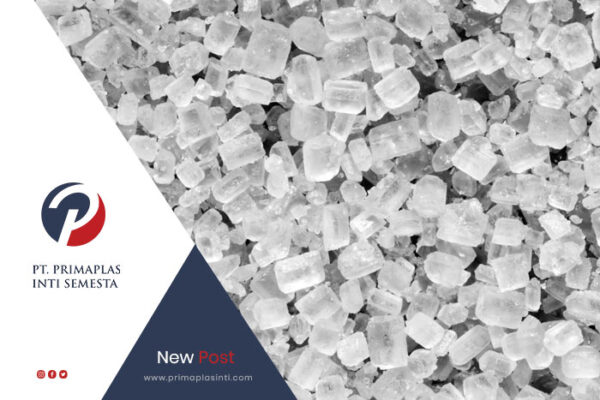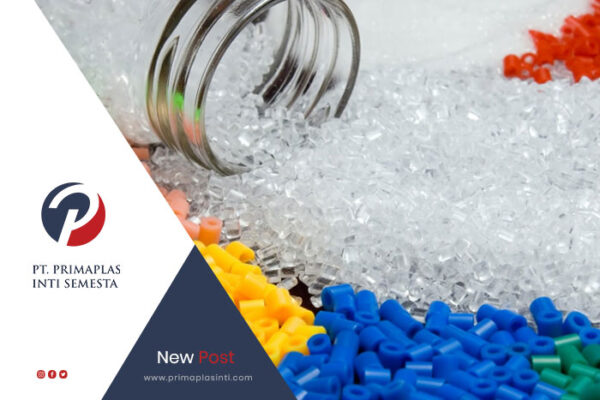The Types of Plastic Pellets
Plastic pellets are tiny granules of plastic resin used in a wide range of manufacturing processes. These small, uniform pellets serve as the raw material in the creation of plastic products through processes like injection molding, extrusion, blow molding, and more. Different types of plastic pellets exist, each offering unique characteristics suited to specific applications. Understanding the different types of plastic pellets available can help manufacturers and buyers make informed choices to meet their specific production needs.
This guide provides an overview of the most common types of plastic pellets, their characteristics, and their applications in various industries.
What Are Plastic Pellets?
Plastic pellets, also known as nurdles, are small granules typically between 1-5 millimeters in size. Manufacturers create plastic pellets by melting down different types of plastic resins and cutting them into small pieces. These pellets are then transported to manufacturing plants where they are melted down and formed into products.
Using plastic pellets instead of large pieces of resin makes the manufacturing process easier, faster, and more efficient, allowing for uniform melting, easy transport, and precise dosing in manufacturing machinery.
1. Polyethylene (PE) Pellets
Polyethylene is one of the most widely used plastics in the world. It comes in several varieties, including High-Density Polyethylene (HDPE) and Low-Density Polyethylene (LDPE). Each type has distinct properties that make it suitable for specific applications.
- HDPE Pellets: Known for their strength and durability, HDPE pellets are resistant to chemicals and moisture. They’re commonly used in the production of plastic bottles, piping, and even household products.
- LDPE Pellets: More flexible than HDPE, LDPE pellets are commonly used to make plastic bags, films, and other lightweight plastic products. LDPE is softer and has a lower melting point, making it easier to mold into thin films.
Applications: Packaging materials, bottles, plastic bags, piping, and household products.
2. Polypropylene (PP) Pellets
Polypropylene is a tough, semi-rigid plastic with a high melting point, making it ideal for applications where heat resistance is essential. PP pellets are often used in food containers, automotive parts, and various household goods.
- Homopolymer PP Pellets: Used for general applications, they offer a high level of chemical resistance and durability.
- Copolymer PP Pellets: These have added toughness and flexibility, making them more suitable for applications requiring impact resistance.
Applications: Food containers, automotive components, lab equipment, and textiles.
3. Polyvinyl Chloride (PVC) Pellets
PVC pellets are highly versatile and come in two main forms: rigid and flexible. Rigid PVC pellets are used in construction materials like pipes and window frames, while flexible PVC is used in items like hoses, cables, and flooring.
- Rigid PVC Pellets: Known for their strength and resistance to impact, ideal for pipes, frames, and structural applications.
- Flexible PVC Pellets: Enhanced with plasticizers for increased flexibility, used in applications like medical tubing and cable insulation.
Applications: Pipes, medical tubing, cable insulation, flooring, and construction materials.
4. Polystyrene (PS) Pellets
Polystyrene pellets can be rigid or foamed, and they offer excellent insulating properties. PS pellets are lightweight and affordable, making them ideal for disposable items and insulation materials.
- General-Purpose Polystyrene (GPPS): Clear and rigid, often used for disposable products like cups and containers.
- Expanded Polystyrene (EPS): Known for its excellent insulation and lightweight properties, used in packaging and building insulation.
Applications: Disposable food containers, insulation, packaging materials, and toys.
5. Acrylonitrile Butadiene Styrene (ABS) Pellets
ABS pellets combine strength and rigidity with impact resistance, making them a preferred material for many industrial applications. ABS is popular for creating durable parts and products that require a balance of toughness and aesthetic appeal.
Applications: Automotive parts, electronics housings, toys (like LEGO bricks), and appliance covers.
6. Polyethylene Terephthalate (PET) Pellets
PET pellets are commonly used in packaging and textile industries. PET is highly recyclable, making it an eco-friendly choice for products such as water bottles and synthetic fibers.
Applications: Beverage bottles, food containers, synthetic fibers, and recyclable products.
7. Polycarbonate (PC) Pellets
Polycarbonate pellets are known for their high impact resistance and optical clarity, making them suitable for applications that require transparency and durability. PC is often used in the production of eyewear lenses, automotive parts, and electronics.
Applications: Eyewear lenses, CDs/DVDs, automotive components, and transparent panels.
8. Nylon (Polyamide) Pellets
Nylon pellets, also known as polyamide, offer a high strength-to-weight ratio, good resistance to abrasion, and high temperature resistance. Nylon is frequently used in the automotive and textile industries.
Applications: Automotive parts, mechanical components, textiles, and fishing lines.
9. Thermoplastic Elastomer (TPE) Pellets
Thermoplastic elastomers, or TPE pellets, combine the properties of plastic and rubber. They are flexible, durable, and can be molded easily, making them ideal for products requiring a soft touch and flexibility.
Applications: Medical devices, footwear, grips, and automotive components.
10. Biodegradable Plastic Pellets (PLA and PHA)
Biodegradable plastic pellets are made from natural sources such as cornstarch and sugarcane. They are an environmentally friendly alternative to traditional plastics.
- Polylactic Acid (PLA) Pellets: Often used in packaging and disposable items, PLA is compostable and has a lower carbon footprint.
- Polyhydroxyalkanoates (PHA) Pellets: Made from microbial fermentation, PHA is biodegradable and used in specialized applications like medical sutures and food packaging.
Applications: Food packaging, disposable cutlery, medical applications, and compostable products.
Choosing the Right Type of Plastic Pellets
When selecting plastic pellets, consider the following factors:
- Application: Each plastic type has specific properties that make it suitable for certain applications. For example, HDPE is ideal for high-durability needs, while TPE works well for products requiring flexibility.
- Cost: Some plastics are more cost-effective than others. PP and PE are generally affordable, while engineering plastics like polycarbonate and ABS may cost more.
- Environmental Impact: If sustainability is a priority, consider biodegradable options like PLA and PHA.
- Thermal and Chemical Resistance: Choose a material that can withstand the conditions it will encounter. For example, PP has a high melting point, making it ideal for heat-resistant applications.
Final Thoughts
Plastic pellets offer a wide variety of options tailored to different industrial needs. From durable HDPE and versatile PVC to environmentally friendly PLA, understanding the properties of each type will ensure you select the right material for your project. By choosing the right pellets, manufacturers can optimize their processes, improve product quality, and even reduce environmental impact.
This guide to the types of plastic pellets aims to provide a comprehensive resource for anyone looking to understand the basics and applications of plastic pellets in today’s industry.



